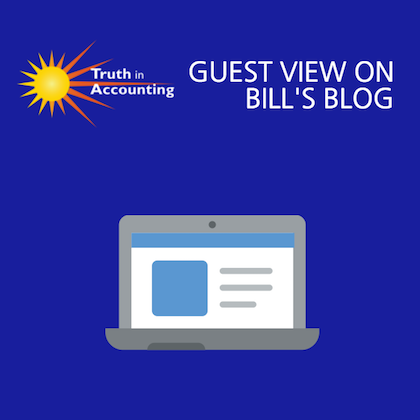
This is the fourth of six articles by Tom McKinney concerning federal government retirement benefits. You can see Part I here, Part II here, and Part III here.
Consequences for Efficiency, Taxpayers and the Rules of Law
Better practices that were scheduled to start—never started. New accounting procedures recommended by the Government Accountability Office in report GAO/FPCD-77-48, dated August 3, 1977, were agreed to by the former United States Civil Service Commission on May 16, 1977 (now named The Office of Personnel Management). The main efficiency agreed to was that the full pension dynamic normal cost, in excess of the employee contribution, should be charged to the (individual) agencies. In addition, the Commission stated “The Office of Management and Budget has also stated that the balance of the dynamic cost should be charged to the agencies beginning in 1979.” In addition, the Commission stated “Understated civil service retirement costs results in hidden subsidies.” (Note: records showing the amount of the hidden subsidies could not be identified.) However, none of the individual agencies were charged the additional pension costs -- that were supposed to start in 1979.
By the time 2015 rolled around, rescue dollars were recognized in the current central administrative accounts of The Office of Personnel Management. As a result, the $23 billion of pension rescue money for 2015 did not show up on individual agency records—where the costs were incurred.
On July 15, 2015, the Congressional Research Service stated, “These (pension rescue) costs are recognized in the Office of Personnel Management’s central administrative accounts, and not by the agencies where the costs are incurred.” Furthermore, on August 24, 2015, the Congressional Research Service stated, “the supplemental payments (rescue money) to the retirement trust fund are required by the 1969 law (Public Law 91-93) come from the general revenues of the US Treasury. As a result, the amount of employee compensation for which agencies must account in their budgets each year understate the full cost of employment.” The full cost of employment, including retirement benefits, should be recorded when and where the costs are incurred.
Results of Understating Full Cost of Employment
Agencies of the US Government sometimes perform services using federal civilians that could be contracted out to commercial contractors. Determining if it is less costly to obtain services through qualified commercial contractors requires agencies to use Office of Management and Budget Circular A-76: “Performance of Commercial Activities.” Cost comparisons include developing federal civilian in-house personnel costs that are compared to bids developed by commercial contractors.
The most recent Circular A-76 guidance requires that 21 percent of federal salaries be used as the cost estimate for retirement pension expenses for in-house personnel. However, the pension rescue money was not considered when the 21 percent was developed because the agencies have understated the full cost of employment.
On June 28, 1995, the Government Accountability Office reported to Congress (GAO/T-GGD-95-197) that it had a “major concern” with the fact that agencies were understating the cost of government programs. The report stated, “Our major concern with the retirement funding process has been that agencies are charged less than the full accruing cost.” However, no action was ever taken to correct the problem—all these years.
As a result, contractors that bid on government proposals were short-changed. The contractors did not get a fair shake at winning and being awarded a contract because of the understatement of the in-house personnel costs.
Tom McKinney, US Army Audit Agency, retired certified internal auditor

